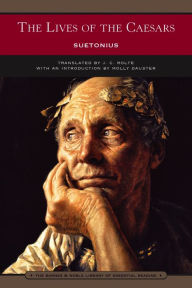Chris Wickham is Chichele Professor of Medieval History at the University of Oxford and a Fellow of All Souls College. His book Framing the Middle Ages won the Wolfson Prize, the Deutscher Memorial Prize, and the James Henry Breasted Prize of the American Historical Association.
The Inheritance of Rome: Illuminating the Dark Ages 400-1000
eBook
-
ISBN-13:
9781101105184
- Publisher: Penguin Publishing Group
- Publication date: 07/30/2009
- Series: Penguin History of Europe Series
- Sold by: Penguin Group
- Format: eBook
- Pages: 688
- Sales rank: 150,366
- File size: 16 MB
- Note: This product may take a few minutes to download.
Available on NOOK devices and apps
Want a NOOK? Explore Now
A unique and enlightening look at Europe's so-called Dark Ages
Defying the conventional Dark Ages view of European history between A.D. 400 and 1000, award-winning historian Chris Wickham presents The Inheritance of Rome, a work of remarkable scope and rigorous yet accessible scholarship. Drawing on a wealth of new material and featuring a thoughtful synthesis of historical and archaeological approaches, Wickham agues that these centuries were critical in the formulation of European identity. From Ireland to Constantinople, the Baltic to the Mediterranean, the narrative constructs a vivid portrait of the vast and varied world of Goths, Franks, Vandals, Arabs, Saxons, and Vikings. Groundbreaking and full of fascinating revelations, The Inheritance of Rome offers a fresh understanding of the crucible in which Europe would ultimately be created.
Customers Who Bought This Item Also Bought
-
- History of Rome (Complete)
- by Livy
-
- Annals of Imperial Rome…
- by TacitusAlfred John ChurchWilliam Jackson BrodribbAlison E. Cooley
-
- The Fall of the Roman Empire:…
- by Peter Heather
-
- The Lives of the Caesars:…
- by SuetoniusJ. C. RolfeMolly Dauster
-
- The Greek Way
- by Edith Hamilton
-
- The Fall of Rome: And the End…
- by Bryan Ward-Perkins
-
- Plutarch's Lives Volume…
- by PlutarchArthur Hugh CloughJohn DrydenClayton Miles Lehmann
-
- Life in a Medieval Village
- by Frances GiesJoseph Gies
-
- Alexander (Barnes & Noble…
- by Theodore Ayrault DodgeIan M. Cuthbertson
-
- Hannibal
- by Ernle Bradford
-
- Plutarch's Lives Volume…
- by PlutarchArthur Hugh CloughJohn DrydenClayton Miles Lehmann
-
- The Ancient Greek Historians…
- by J. B. BurySarah Bolmarcich
-
- Germania: In Wayward Pursuit…
- by Simon Winder
-
- In the Wake of the Plague: The…
- by Norman F. Cantor
-
- Dividing the Spoils: The War…
- by Robin Waterfield
-
- The Lost Empire of Atlantis:…
- by Gavin Menzies


















